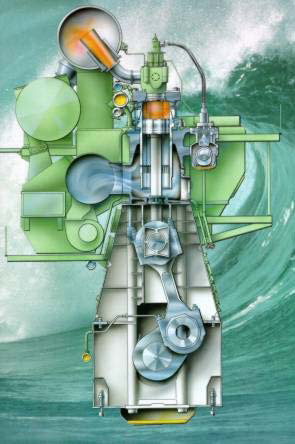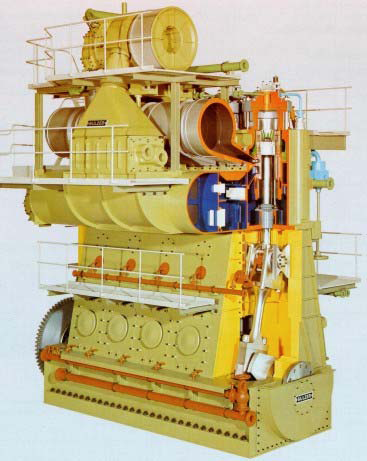Scavenging is the process whereby air at a pressure greater than that of atmospheric presuure is used to push the exhaust gas out of the cylinder of an engine. Unlike the 4 stroke engine, a two stroke diesel engine does not use the piston to push out the exhaust gas, instead, air enters the cylinder around bottom dead centre and sweeps or scavenges the exhaust gas from the cylinder.
2 stroke engines with an exhaust valve mounted in the cylinder head are known as uniflow scavenged engines. This is because the flow of scavenging air is in one (uni) direction.

Some 2 stroke engines do not have exhaust valves; As well as scavenge ports in the cylinder liner, they are fitted with exhaust ports located just above the scavenge ports. As the piston uncovers the exhaust ports on the power stroke, the exhaust gas starts to leave the cylinder. When the scavenge ports are uncovered, scavenge air loops around the cylinder and pushes the remaining exhaust gas out of the cylinder. This type of engine is known as a loop scavenged engine. Note that the piston skirt is much longer than that for a uniflow scavenged engine. This is because the skirt has to seal the scavenge and exhaust ports when the piston is at TDC.
Although simpler in construction with less moving parts, these engines are not as efficient or as powerful as uniflow scavenged engines. The scavenging of the cylinder is not 100%, and thus less fuel can be burnt per stroke.
All modern large 2 stroke crosshead engines now being built are of the uniflow scavenged type.

